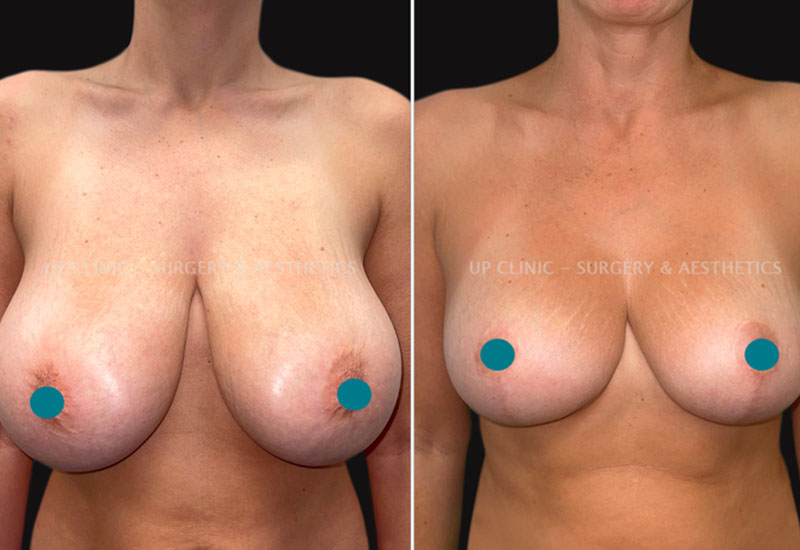Breast reduction is a very common surgery, usually requested between 45 and 55 years of age. The main reason for having this surgery is due to an increase in breast size, either from post pregnancy changes, (like breast feeding), menopause or diminished physical workout, metabolism slowing down and a sedentary lifestyle. The impact on self-esteem caused by larger breasts may affect the woman in many ways, for example, conjugal, social, and professional.
Excess of volume, large areolas, ptotic breasts (sagging) and cervical column pain are the main reasons a woman decides to undergo breast reduction surgery. There are, however, young women, even teenagers, who, because of hormonal breast gland hypertrophy or asymmetry, desire to reduce the breast size so that normal social and personal well-being is achieved.

The surgery is performed in two to three hours, depending on the complexity of the case, without the need to stay in the hospital. The scars can be circumvertical, around the areola (so that it is repositioned and reduced), vertical (necessary to correct the excess of tissues) or along the inframammary sulcus (below the breast). The most frequent, and with more consistent outcomes, are inverted T scars.
Manual lymphatic drainage is initiated the day after, and one to two weeks of rest is recommended. After this, the scars will begin to be treated with silicon products, specific manual treatments, and eventually, if needed, plasma, lasers or corticoids are used. There can be altered temporary or permanent sensation to the nipples or skin and small areas of soreness for two to six months.
I recommend patients have their weight stabilised prior to the surgery in order for the best outcome in terms of longevity.
Tiago Baptista-Fernandes is a specialist in plastic surgery.













